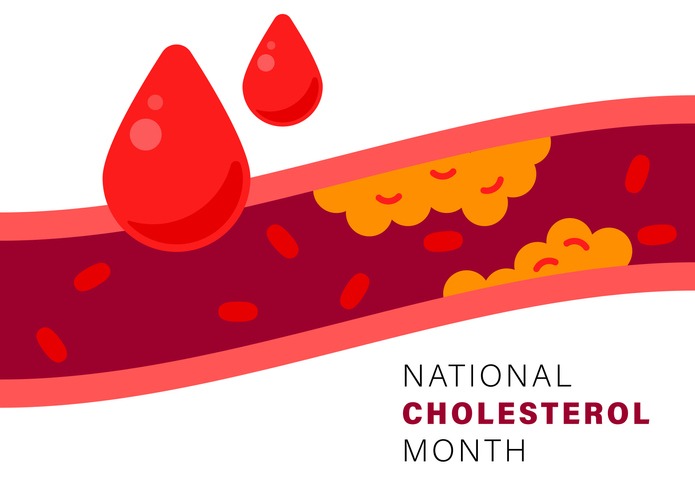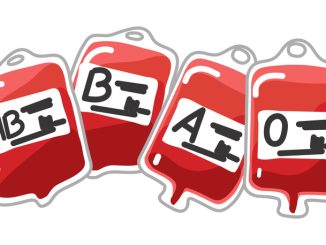
As we are now halfway through cholesterol awareness month, we thought this blog would be an interesting read. Review how managing cholesterol is a vital step in reducing cardiovascular disease and what the NHS is doing to improve lipid management
CREDIT: This is an edited version of an article that originally appeared on England NHS
High cholesterol was highlighted as a priority in the NHS Long Term Plan as one of the three ‘A-B-C’ conditions (atrial fibrillation, blood pressure and cholesterol) which are the major underlying risk factors for CVD.
It is well established that raised cholesterol is associated with an increased risk of heart disease and stroke – with a third of all ischaemic diseases being associated with higher cholesterol levels.
In England, high cholesterol leads to over 7% of all deaths and affects up to 60% of adults.¹
The identification of people with, or at risk of developing, CVD is essential to allow timely intervention to reduce their cholesterol level and minimise their risk of heart attack or stroke.
Statins first
Statins have been well-established as first line therapies for people diagnosed with, or at risk of CVD for more than three decades.
Over time, clinical trials have demonstrated that high intensity statins, which can lower cholesterol by up to 55%, are more effective at preventing cardiovascular events than low or moderate intensity statins.
In people with established CVD, a high-dose high intensity statin is recommended by NICE to deliver the greatest reductions in cholesterol levels and hence have the biggest impact on the risk of death, heart attack and stroke.
Earlier this year, the NHS set our national objective to increase the uptake of lipid lowering therapies in people at risk of CVD during 2023/24 and measures have been incorporated into the GP contractual framework to further expand the use of statins first line in people with diagnosed with CVD.
Despite common perceptions, statins are well tolerated in most cases – evidence suggests less than one in 10 people are intolerant to statins.
Patients should be reassured that statins are safe and effective in reducing their risk of a cardiovascular event and that, where side effects happen, alternatives are available.
Intensifying therapies
For a proportion of people, achieving the required cholesterol reduction will not be achieved with statins alone. In addition, some people cannot take statins at adequate doses or at all, due to contra-indications or adverse effects.
Further therapies will therefore be required, as an add on to statins, or as an alternative where statins are unsuitable or not tolerated.
NICE has laid out the specific role of additional lipid lowering therapies in a series of technology appraisals for ezetimibe, bempedoic acid, inclisiran and the PCSK9imabs, alirocumab or evolocumab; these are summarised in the NHS England/Accelerated Access Collaborative Summary of National Guidance for Lipid Management for Primary and Secondary Prevention of CVD.
A simplified version of the secondary prevention lipid modification pathway has been developed to support implementation.
Early identification and intensification for patients who are not achieving adequate cholesterol control will significantly reduce cardiovascular events.
Addressing global CVD risk
In order to deliver the best possible outcomes for people with or at risk of CVD it is important that, alongside lipid lowering, we identify and address other risk factors.
Behavioural change is essential where there are lifestyle factors such as smoking, increased body weight, poor diet, lack of physical activity and excess alcohol consumption.
The importance of this element of holistic care has been increasingly recognised in primary care and community settings.
Alongside lifestyle support, people with raised blood pressure, raised blood sugar and/or atrial fibrillation may need additional medical interventions to reduce their CVD risk, such as anti-hypertensive therapies, antidiabetic medicines and anticoagulants respectively.
In introducing any of these therapies, including lipid lowering, it is important to support the patient in a shared decision regarding their treatment options.
What’s the opportunity?
Improving cholesterol management presents a huge opportunity to save lives, prevent disability and reduce health inequalities.
Modelling from UCLPartners Size of the Prize indicates that if 90% of people with CVD were treated with statins, almost 14,000 heart attacks, strokes and deaths would be prevented in 3 years. If treatment rates were increased to 95%, around 22,000 events would be prevented.²
We can collectively capitalise on this opportunity by:
- Taking steps to ensure that everyone who would benefit from lipids optimisation is identified and offered appropriate treatment
- Actively raising awareness of a statins first approach to reduce cardiovascular events
- Intensifying therapy early with additional lipid lowering therapies, where statins alone have not achieved treatment targets
- Empowering patients through shared decision-making conversations to improve adherence.



Be the first to comment